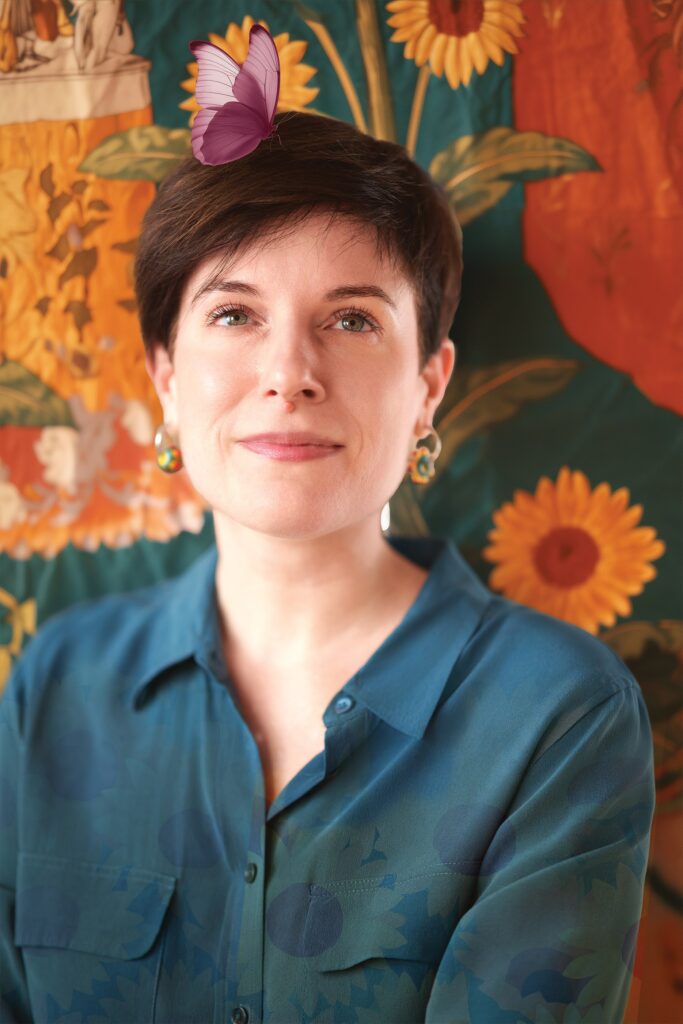
Michèle’s first Lupus symptoms made themselves felt in her mid-30s. Before that, she was running at 200%. A self-employed creative, successful, and relentlessly driven, she embodied the energy of a young entrepreneur building a career and life burning both sides of the candle and yet never having to pause and rest – barriers, she felt, simply didn’t apply to her.
But then, suddenly, her energy was zapped. She started feeling unwell. She had trouble thinking clearly (sometimes called ‘brain fog’), got headaches, and her joints would be hurting. Just doing everyday things left her feeling exhausted, leaving no energy for her clients and work.
“Lupus can be hard for doctors to figure out at first. Almost half of people with Lupus are initially misdiagnosed because symptoms vary so much between patients and are often recurring at unpredictable intervals rather than permanent.“
Getting Diagnosed
When Michèle first went to the doctor, tests didn’t show anything obvious. Some doctors thought her problems might be stress-related or psychological, not physical. This happens more often than should be possible, especially to women, and it can make people feel like their pain is not seen as valid.
But Michèle felt strongly that something was physically wrong with her body. She didn’t accept the doctors’ suggestions that it may simply be merely psychological. “You know, there’s something wrong with you, and I knew I had to fight to get the help I needed” she recalls thinking to herself. Usually, it takes five or six years to get diagnosed with a rare illness like Lupus.
Michèle didn’t want to wait that long. And also couldn’t as her symptoms worsened. She pushed hard for more tests and was able to find the right specialists – but her story is also a cautionary one. Next to knowing she had to advocate for herself, she was able to it was thanks to her self-acknowledge privilege of being friends with doctors and other medical professionals that enabled a quick diagnosis within months by April 2023. This was unusually fast, making her feel ‘lucky’. Lupus can affect all organs of the body if not managed properly. Her quick diagnosis unfortunately makes her a statistical anomaly.
Facing the Illness
Finding out she had Lupus was scary. “They let you go home and tell you to do your best… all I could think of is: I could die from this and nobody can tell me how bad it can get.” Her old life, work, and social activities felt like they had stopped suddenly. “You’re suddenly told, yes, you’re seriously ill and if you’re not careful… well, then your situation can and will get much worse.”
This transition was incredibly hard on her, and she credits her support network, especially her best friend and doctor acquaintances, for helping her getting through it all. True to her nature, Michèle decided to treat her illness like a project. “When I have a problem, I actually turn it into a project to map out issues and then find a solution.” She started changing her life – looking at her diet, exercise, and daily routines. She wanted to find ways to feel more in control, even though having a long-term illness often makes you feel like you’ve lost control.
Daily Life with Lupus
Living with Lupus means everyday life is now very different. Michèle has to deal with her body being unpredictable. She doesn’t bounce back from tiredness as quickly as she used to. Simple tasks, like going to the supermarket, can become a major challenge. Even on a good day, out shopping for groceries, she might have to suddenly stop and go home if she feels a wave of tiredness or pain hitting her. She has to be careful not to push her body too much lest she push her body beyond its new limits.
Her energy levels dictate what she can and can’t do each day. Whatever is planned for may have to necessarily change based on the ebb and flow of her symptoms. “You have to deal with Lupus every day,” Michèle explained. She has to listen to her body constantly. “How do I feel this morning…? What kind of day will it be? How can I react to it? And how can I still get the most and the best out of my life?” This takes a lot of mental effort – always checking in with herself, planning, and changing plans.
The Problem of Looking too Well / Healthy
Compounding the physical challenges is that Lupus is often an invisible illness. Michèle might look perfectly healthy on the outside, even when she feels terrible inside. People often say things like, “But you look great! I can’t see anything wrong with you.”
While people may mean well, these comments can be upsetting. They make it seem like her illness isn’t real or people cannot believe it could be real just because it doesn’t manifest visibly (Michèle does not get the ‘typical’ butterfly rash). Michèle asks, “Yes, how am I supposed to look then? Do I have to sit in a wheelchair or walk on crutches…?”
Because she doesn’t “look sick,” Michèle feels uncomfortable using things meant for people with disabilities, like special seating or priority checkouts, even when she needs them. She worries people will judge her because “I just don’t ‘look the part’ of the wheelchair pictogram, and people will come up and confront you.” The fear of judgment or confrontation, fueled by the disbelief and occasional sexism inherent in “you look great,” creates yet another barrier that makes her feel isolated at times.
Lessons Learned
Michèle has learned important things from having Lupus, especially about being kind to herself. “I used to always… push excessively,” she admitted. “I wasn’t empathetic enough with myself at all.” Being forced to slow down and take care of herself has helped her be kinder to herself.
This has also made her more understanding of others. “I think this has generally made me a more empathetic person and much more comprehensive about how other people are doing, even if they don’t talk about it but show those subtle signs that I can now identify.” she shares.
She also learned to listen carefully to her body. At first, this made her anxious about her health. But over time, she learned to understand her body’s signals better. Her advice for others is: “Listen to how you are feeling… and then you really have to become your own detective and stand up for yourself.” She remembers doctors dismissing her concerns, telling her it was psychological or to “calm down.” She stresses, “You have to learn to advocate for yourself.”
Travel and Hopes for the Future
Travel used to be easy and fun for Michèle, but now it’s complicated. She has to plan a lot: avoid busy times, check for medical help nearby, sometimes travel with someone, and pay extra for things like fast lanes to save energy.
Sometimes, travel just isn’t possible. “Untaken journeys are personally the worst moments for me,” she shared. She can still enjoy smaller trips, but big dreams like visiting Japan or India feel out of reach right now. These are destinations she avoids now “for health reasons, perhaps also because of the climate and how it affects my symptoms… but above all because of the flight journey, which takes so long that I know I’ll need days to weeks to recover.”
Initiatives like the Sunflower Lanyard, she believes, are vital because they “give you back a piece of autonomy and freedom,” reducing stress over potential and real barriers alike, and making life feel “a bit more normal instead of being made to feel disabled.” Her hope is for people to be kinder, more generous, and more aware of others who might have hidden struggles, even if they look “so normal.”



